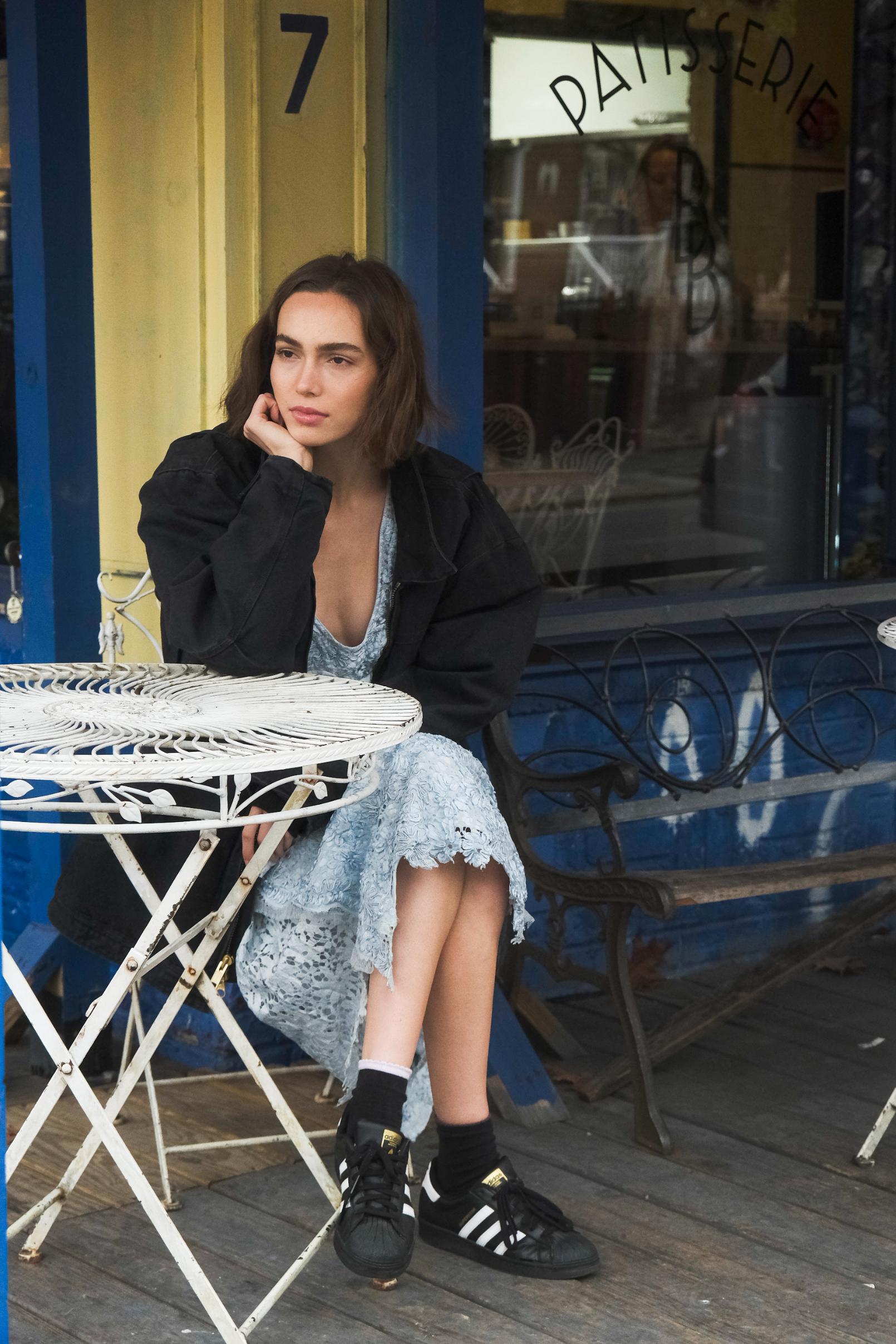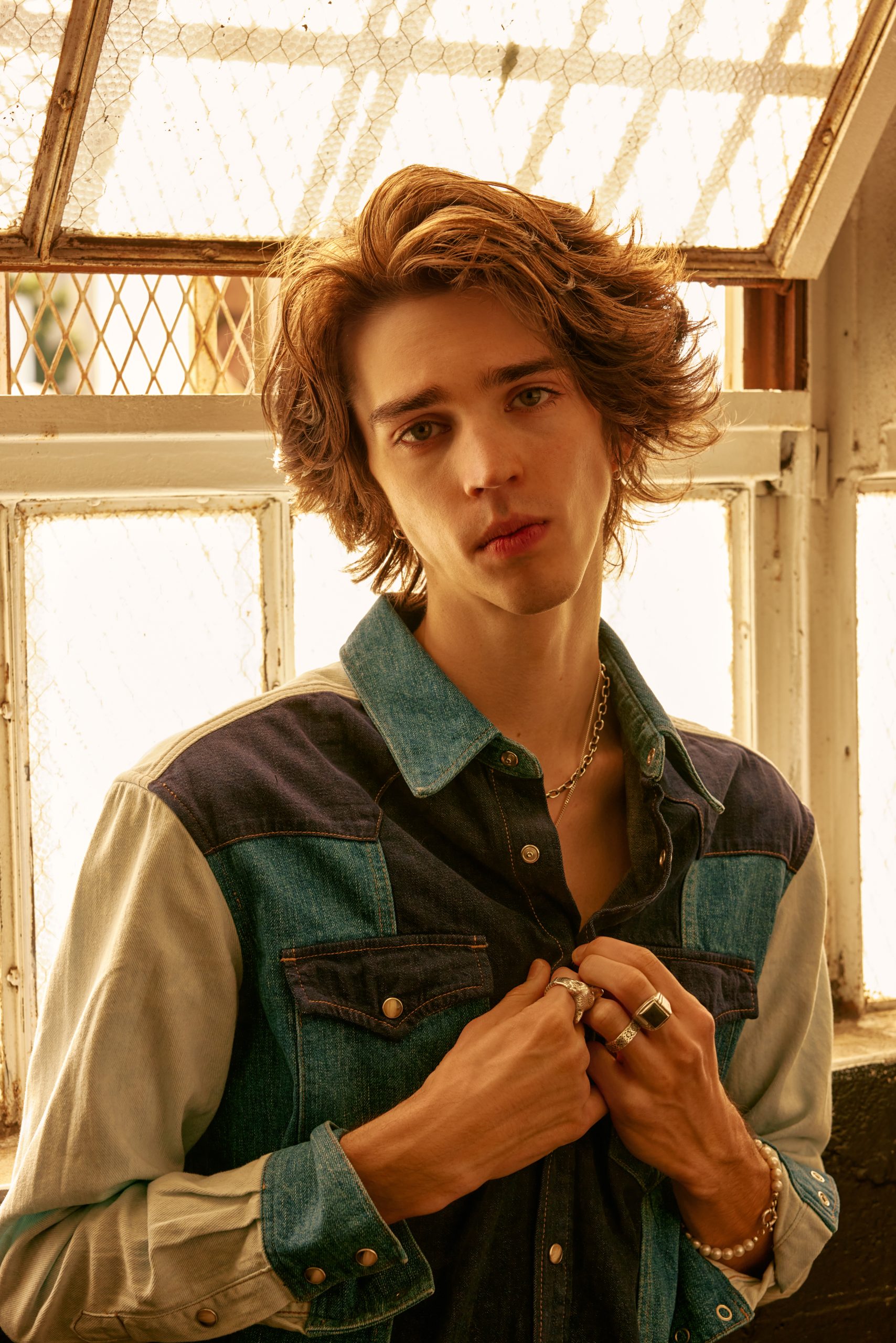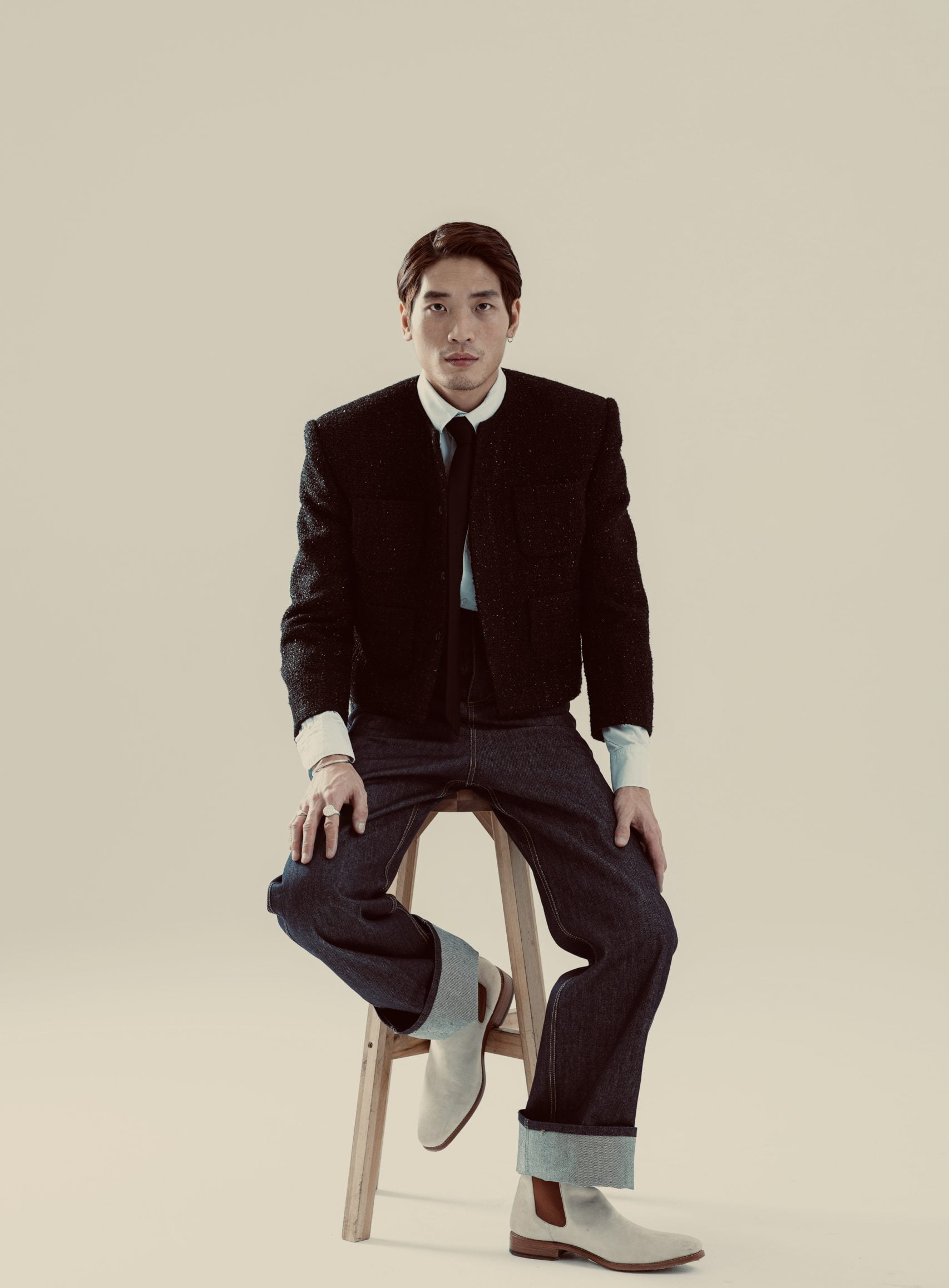
Kyle Ho
From forgoing the instant gratification of fast fashion in favour of a made-to-order business model to putting his own spin on the traditional archetypes of menswear, Kyle Ho is fighting against the norms of the fashion industry.
The Hong Kong-born designer first developed an interest in fashion as a pre-teen, reading fashion magazines behind his parents’ backs. He attended several short courses while in high school, before coming to the UK to study at London College of Fashion. Why London? Because he believes nowhere else in the world beats its respect and appreciation of creativity. Since moving to London, he’s built his eponymous menswear brand, taking his knowledge of traditional tailoring techniques learnt during his time as an apprentice on Savile Row and turning them on their head, pushing the boundaries of what men’s fashion can be. Kyle Ho as a brand stands for equality and authenticity; encouraging its wearers to “reach for the sky,” which was actually the concept of his graduate collection.
Earlier this week, Kyle presented his Autumn/Winter 2024 collection as part of London Fashion Week’s DiscoveryLab — a space for emerging designers to showcase their work through immersive and interactive performances. But, a champion for accessibility in the fashion industry, he refused to settle for a traditional invite-only presentation and took his first live show to the public at Picadilly Circus as well.
Right before his London Fashion Week debut, 1883 Magazine’s Bec Oakes spoke to Kyle about starting your own brand in the middle of the pandemic, tailoring with a twist and bringing fashion week to the masses.
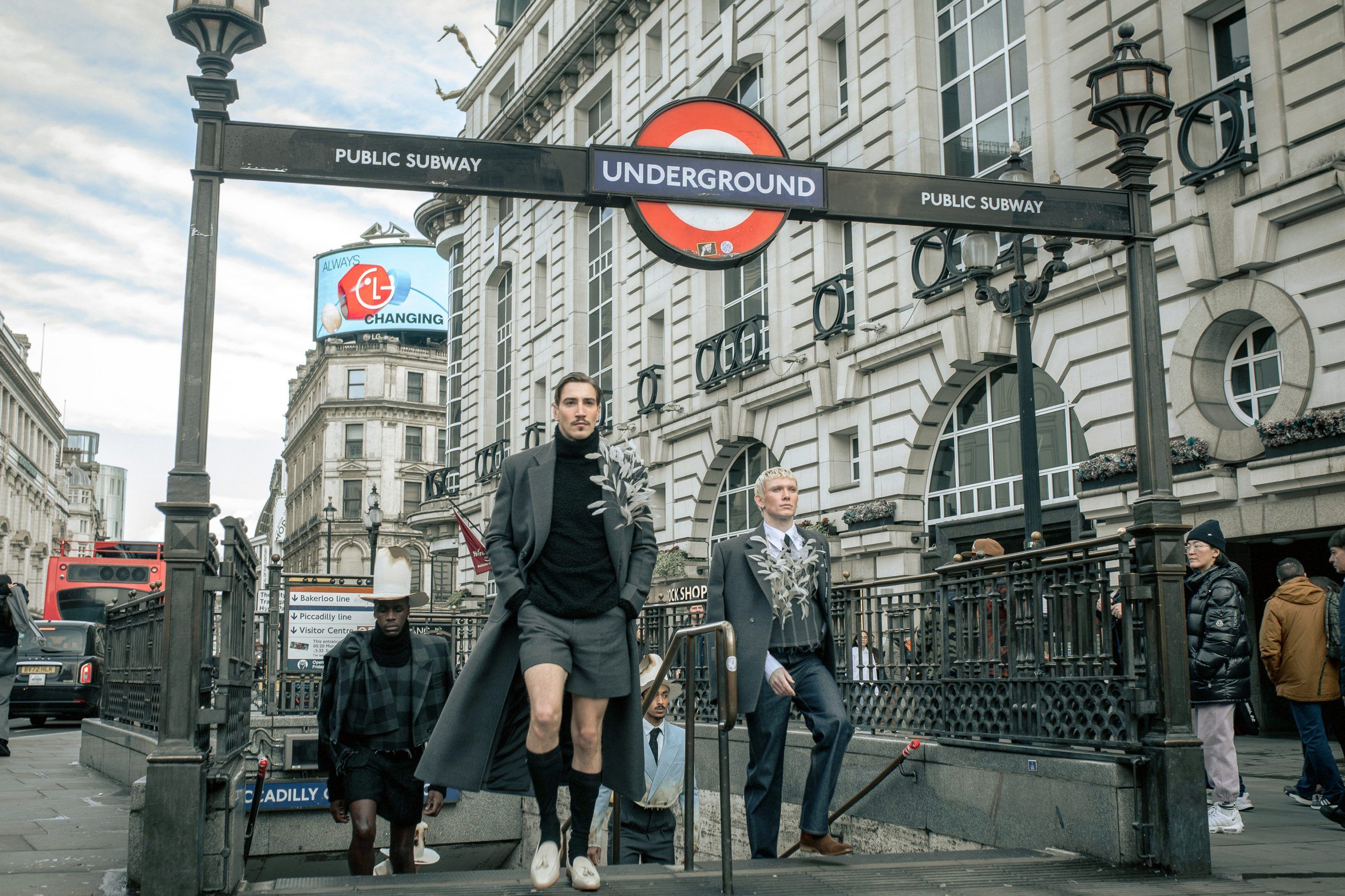
First of all, congratulations on your first live activation at London Fashion Week. Where’s your mind at right now?
Right now, I just want to get my collection done. We’re right in the middle of taking things to the next level. There are all these invisible pressures on you because you want to present your absolute best to the audience. Then, this London Fashion Week, I’m joining the digital platform associated with DiscoveryLab. This means I need to finish the fashion film a week before, so we have even less time than most brands. I don’t even know when the last I actually chilled out was; it’s very stressful.
But also really exciting, I can imagine.
Yeah. Don’t get me wrong, it’s very exciting. And also because we’re doing something different this season with the public presentation.
Could you share a little bit about the Autumn/Winter 2024 collection and the inspirations behind it?
So the intention behind the autumn/winter collection is all about narcissism. When we think about narcissism, we usually associate it with the negative. But at the same time, it can be manifested in a positive way as an empowering force. However, when someone is too self-obsessed, it becomes toxic. The collection kind of finds the balance between the two, I would say. This season is also a turning point actually for my brand. I’m focusing more on show pieces instead of the commercial aspect because I want to make sure my brand is sustainable. I don’t want to do mass production because it kills the environment and there’s also the issue of consumer behaviour. I want to have a new direction from an artistic point of view but also think about social impact.
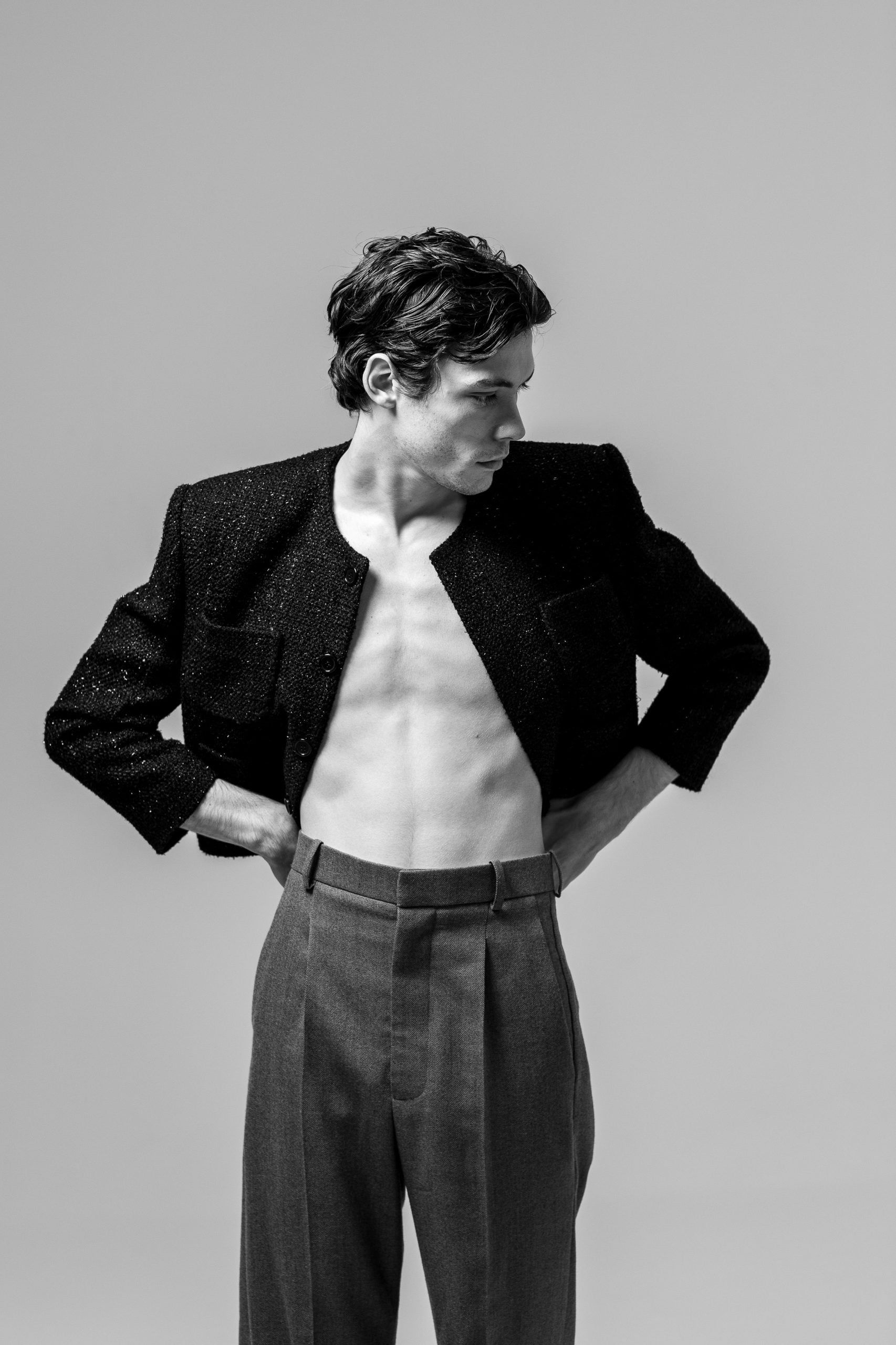
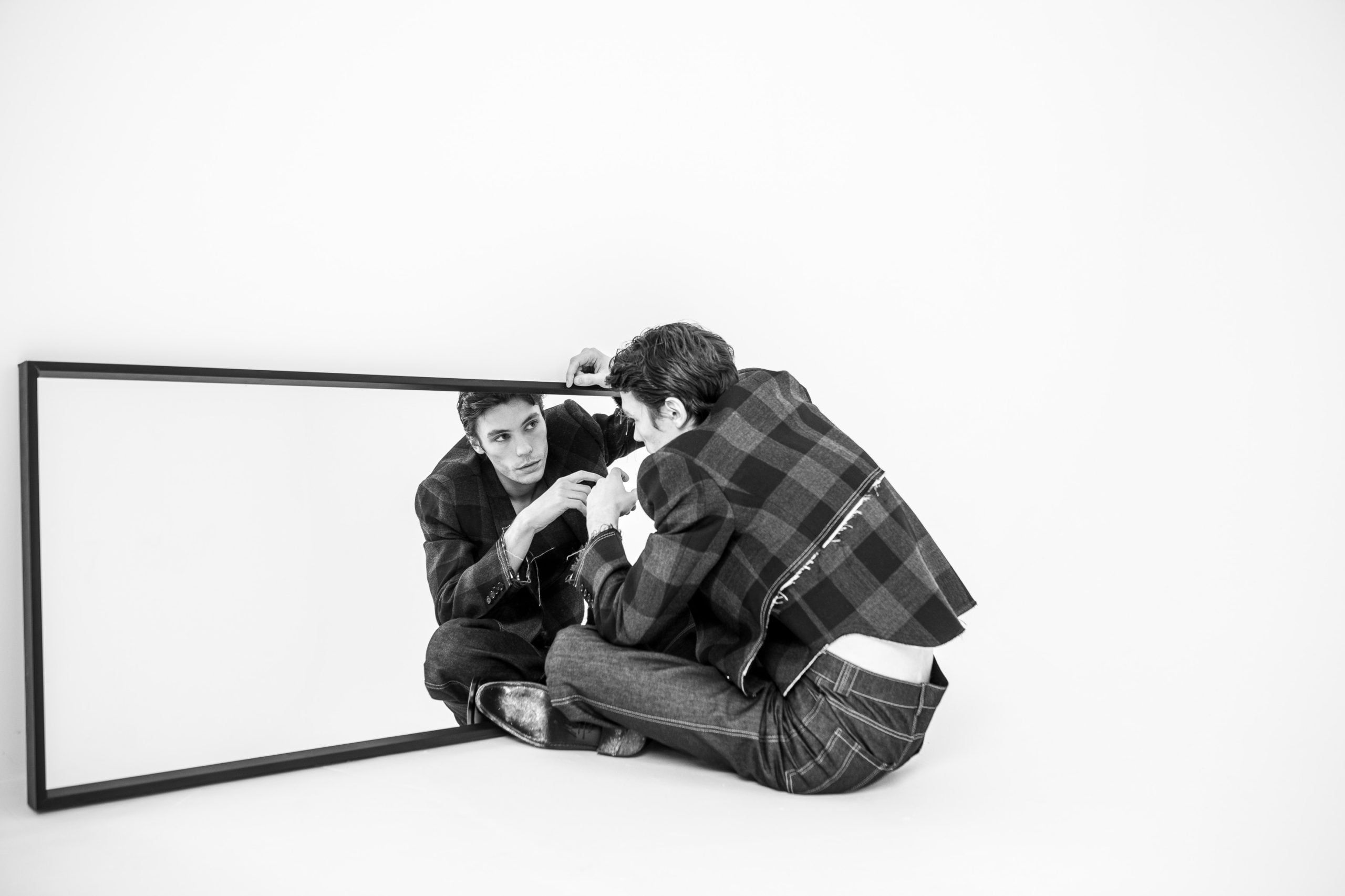
What steps do you take throughout the creation process to reduce your environmental impact?
First of all, I usually source materials from local vendors so I can reduce my carbon footprint. And because I’m not making a mass of commercial pieces, it reduces the amount of fabric we use. We also sometimes use fabrics from previous seasons so nothing goes to waste and have more of a made-to-order model. I wouldn’t say it’s ready-to-wear. [Brands are] producing huge amounts of products that people can so easily buy. I don’t know if people treasure things when they’re so easy and fast to get. I want my audience to have more of an appreciation of the creativity. Do you know what I mean?
Completely. Do you ever find that message challenging to get across in a world that’s dominated by fast fashion?
It’s very challenging but I’m not scared of that. If I were scared, I would just go commercial or join a fast fashion brand. But we need to challenge fast fashion and how it completely dominates society right now. I’m probably just a very small voice, but if I’m standing there, at least I can make a change. It might be a tiny, tiny bit, but it’s better than doing nothing.
I guess if everyone made small changes towards a slower fashion model, that would make a big change overall.
Exactly.




Your designs defy traditional tailoring with these exaggerated proportions and extravagant silhouettes. What do you hope to achieve by pushing the boundaries of the archetypes of menswear?
So, because I worked as an apprentice on Savile Row, I have a background in and knowledge of traditional tailoring techniques. And there’s this perception that tailoring should be very formal; there’s this very strict category of what it should be. I like pushing that boundary. I use traditional techniques to manifest tailoring but use modern silhouettes and change proportions to create something traditional with a twist.
And beyond the brand’s digital activation at London Fashion Week’s DiscoveryLab, you’re also taking the collection public to Picadilly Circus. What was the motivation behind that?
There are a couple of reasons. I want to make a statement and challenge the fashion culture right now. Traditionally, if you want to go to a show or presentation during fashion week, you need to get an invitation. That’s just how it works. In fashion right now, we’re constantly promoting and encouraging diversity and inclusivity. But, if we’re talking about inclusivity, why do we need a ticket or invite to a show? It feels a little bit hypocritical. I also want my collection to be accessible to a wider audience. When I create a collection or I create a new piece, everyone should have the same right to look at it, instead of certain people having the privilege to see it first. That’s why I chose to open it up to the publication. Fashion should be open to everyone, not only those with privilege. I want everyone to see the message I want to deliver with my collections.
Fashion week has long felt like this very exclusive, invite-only thing, which feels almost like a representation of the wider fashion industry. I guess it’s all about trying to break down those barriers.
Yeah. I appreciate what’s happened in the past. But, being a new generation of designers, we should all take part in challenging that to make the industry a better place.
And what is the message you’d like to share with the world through your brand as a whole? What would you like people to feel when they see and/or wear your designs?
The most important thing is, when someone wears my designs, I want them to feel confident and truly believe in who they are. Being both Asian and gay, I can understand how some people may have doubts about their identity. But the fact is, they shouldn’t. When you wear my designs, it’s all about expressing your authentic self. Being born and raised in a very traditional family in Hong Kong, they always expected me to be a doctor or lawyer. But I went in the complete opposite direction. You should always believe in who you are.
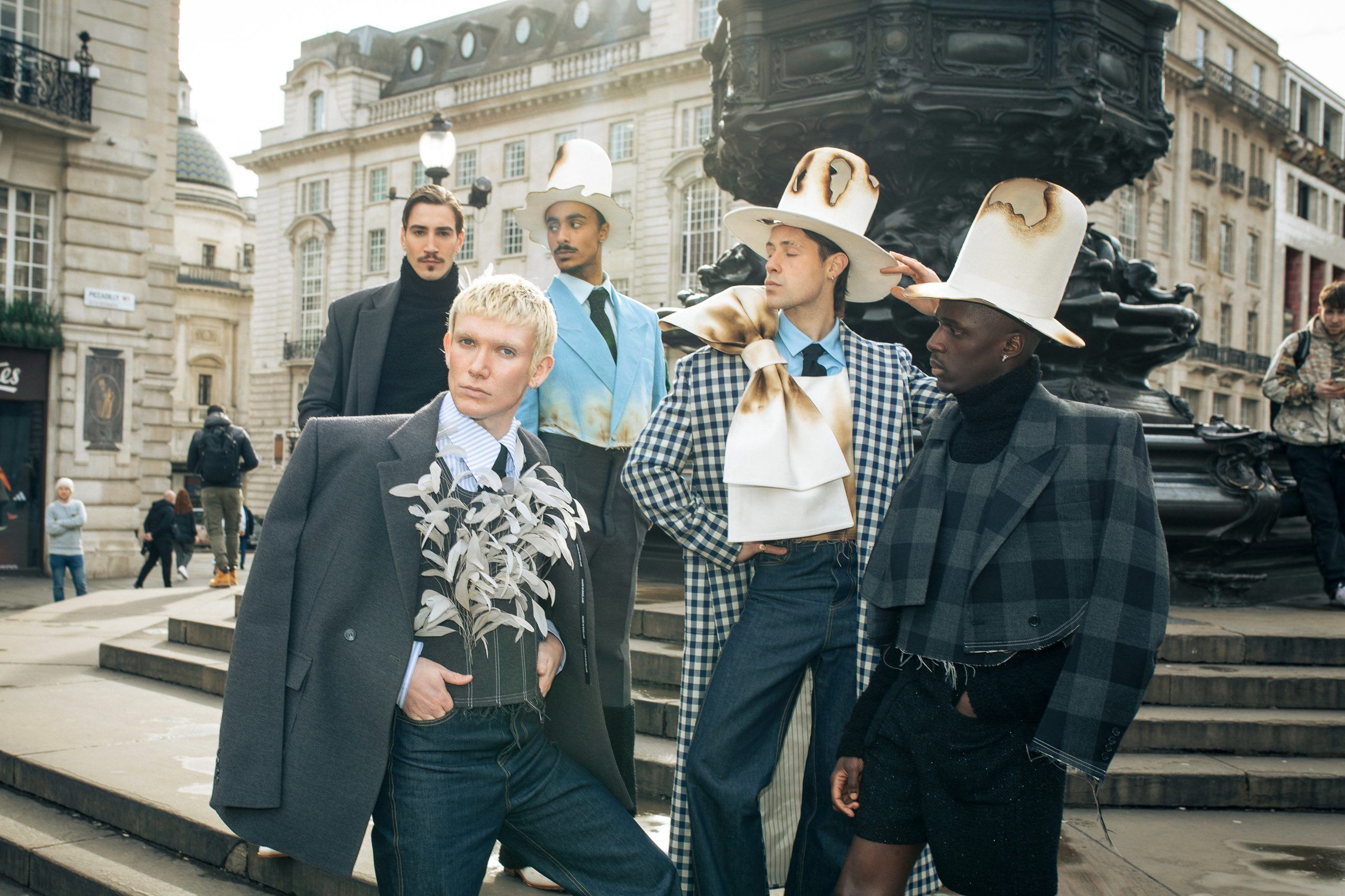
Going back in time now, when did you first develop an interest in fashion?
So I always liked drawing. Then I started reading fashion magazines when I was 12. I mean, I read them in secret obviously because my parents wouldn’t have appreciated the fact that I was reading fashion magazines instead of books. But yeah, that’s how it started. Then I started doing some short courses in high school and that’s how I started in terms of design.
So, you ultimately chose to come to the UK to study at London College of Fashion. What was it about London that made you think “This is where I need to be?”
Before I applied to the London College of Fashion, I also got into Parsons in New York. But, I chose London because it has a much bigger history. America has only a few hundred years of history but in Europe, you’re talking about thousands of years. But, when I first came to London, I didn’t do fashion design. I did fashion styling and production. Then I studied menswear design for my master’s. What I realised was when I was doing the styling course, I really liked customising the garments for photoshoots. I was like “Wow, I may as well be a designer.”
To what extent do you feel like London influences you as a designer?
It definitely does. In London, there’s this respect for creativity. Nowhere else can beat it. For me, there’s this acceptance of being a creative. It’s a lot more open than Hong Kong.
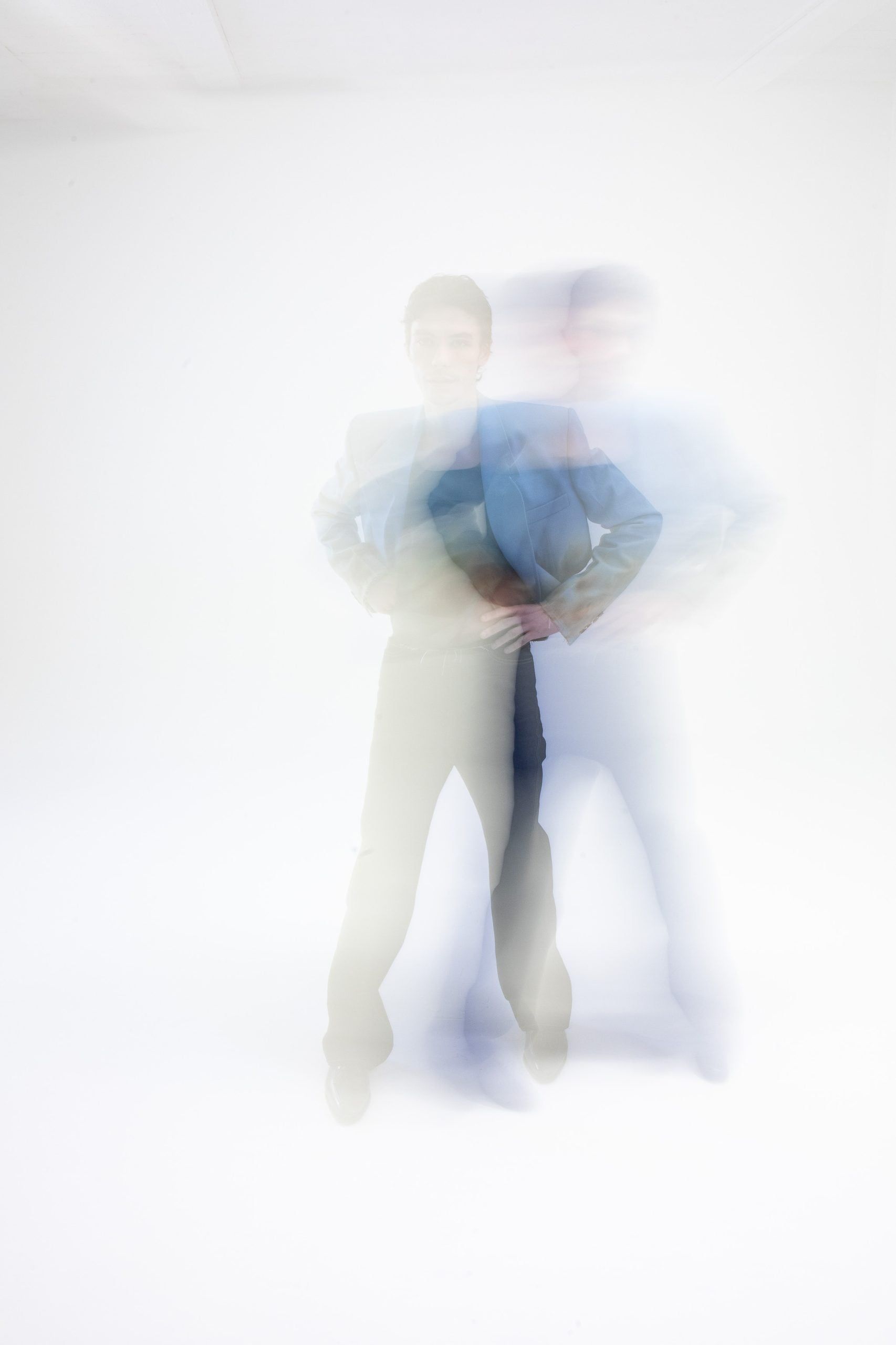

And what was your journey post-education like to get to where we are now, showing your own brand at Fashion Week?
After I graduated, I launched my brand but I felt like I was in limbo because of the pandemic. My grad show was literally the last show before the pandemic. We had the show in February and were in lockdown in March. I was in the last cohort who go to do that before everything happened. Then, going through the pandemic, it was tough. It was really, really tough. I had to adapt to a new way of thinking and working. I’m pretty sure a lot of independent designers found it a struggle to maintain. But we have to keep telling ourselves that we can make it. I’d say the journey to get to where I am now has been just day by day, telling myself to go after what I believe in even though it’s difficult.
For those hoping to follow in your footsteps, what’s the number one piece of advice you’d give them?
I would say to try not to follow trends too much because it can limit your creativity. Also, you have to practice a lot. You can’t just claim yourself as a designer. You have to understand how to construct a garment. Being a true designer is so much more than doing a few sketches. And there’s no end to that learning. Whatever stage you’re at, you have to keep practicing. But, if you’re passionate enough about something, you’re not practicising for the sake of doing it. You’re practicing because you love it. It kind of goes back to the autumn/winter collection, when you obsess over something, it can turn into something good.
And to finish, I always love to ask people what’s next? What would you love to see the brand become?
I mean, obviously, I would like to gain a wider audience and I hope they can recognise who they are when they wear my clothes. It doesn’t really matter if you’re male or female or whatever, be authentic to yourself.
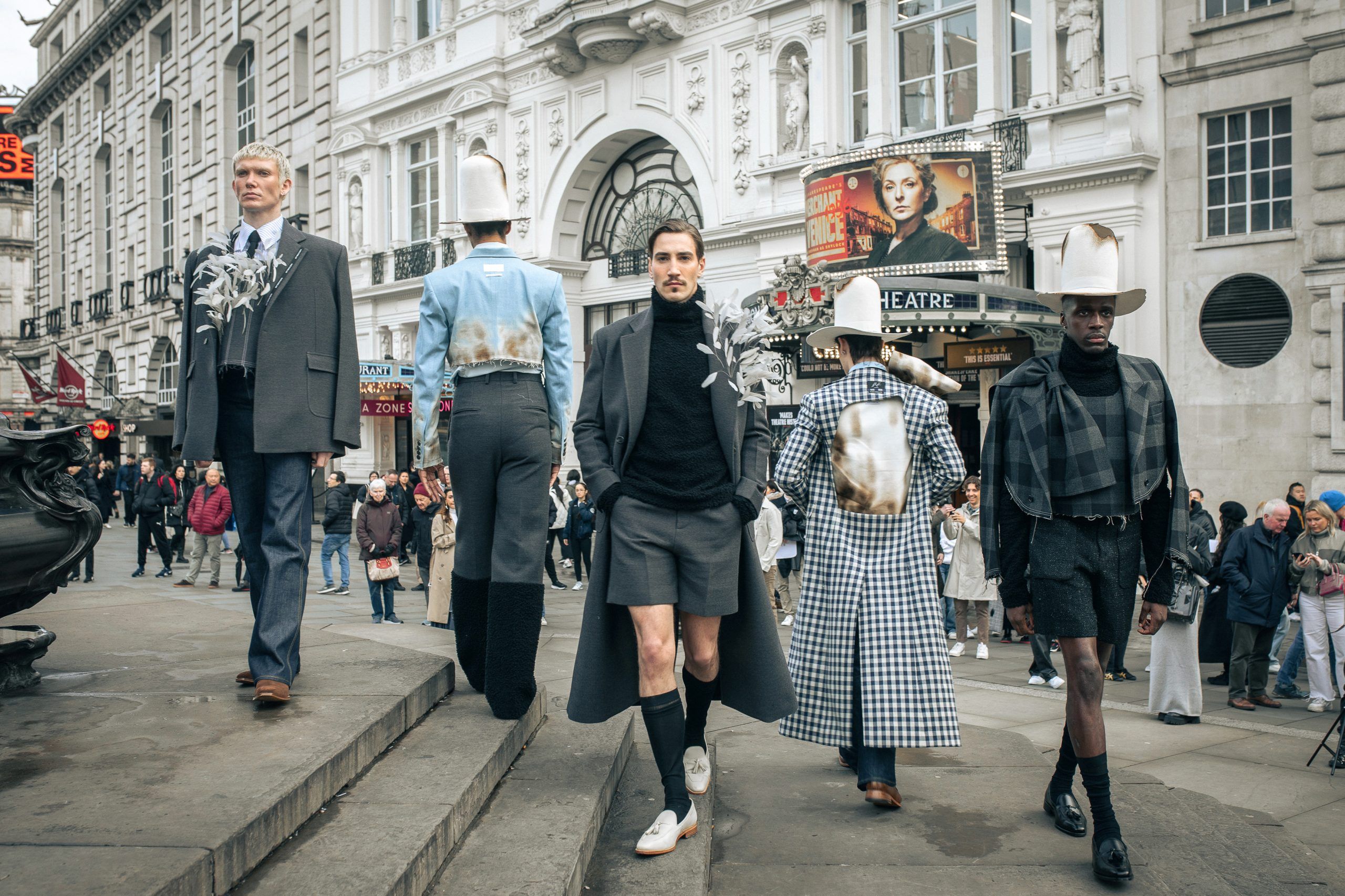
Learn more about Kyle Ho’s work at kyleho.com.
Interview Bec Oakes
Imagery c/o Kyle Ho
Photography Omer Ga’ash
Hair & Makeup Dongha Kim
Model Jude Naylor



